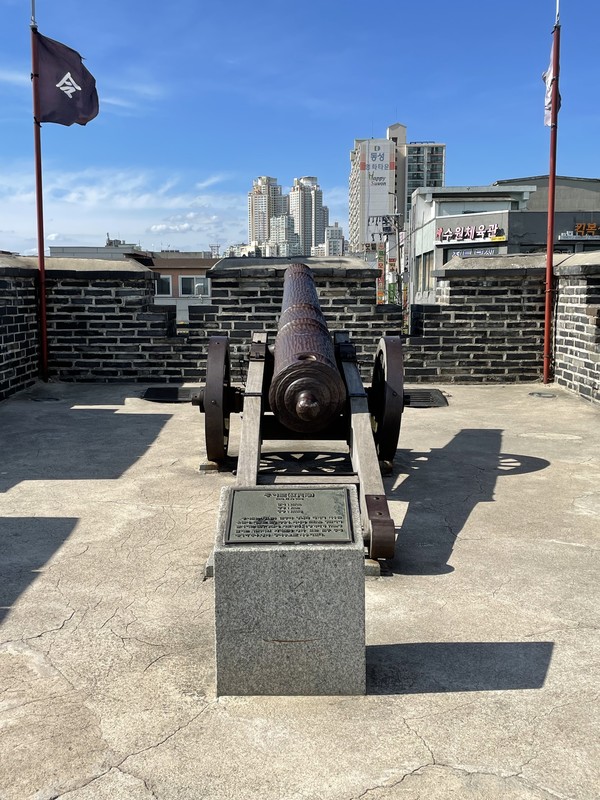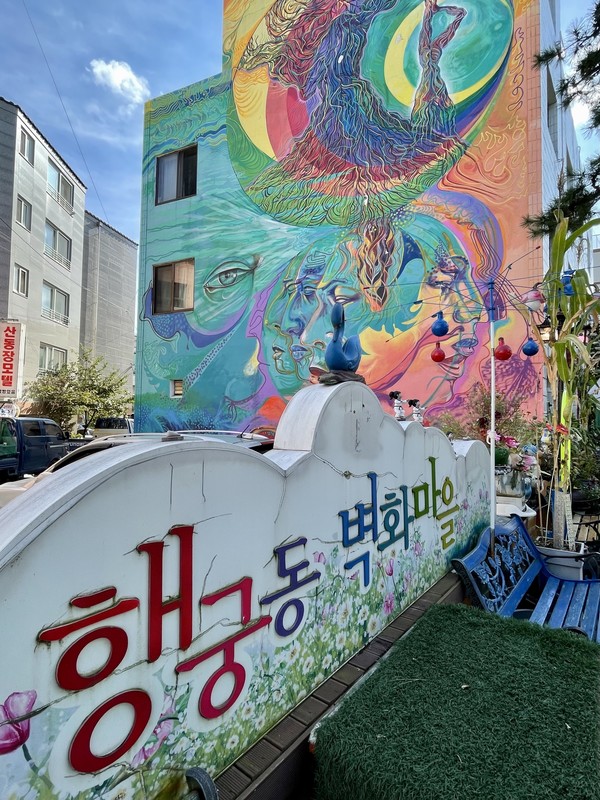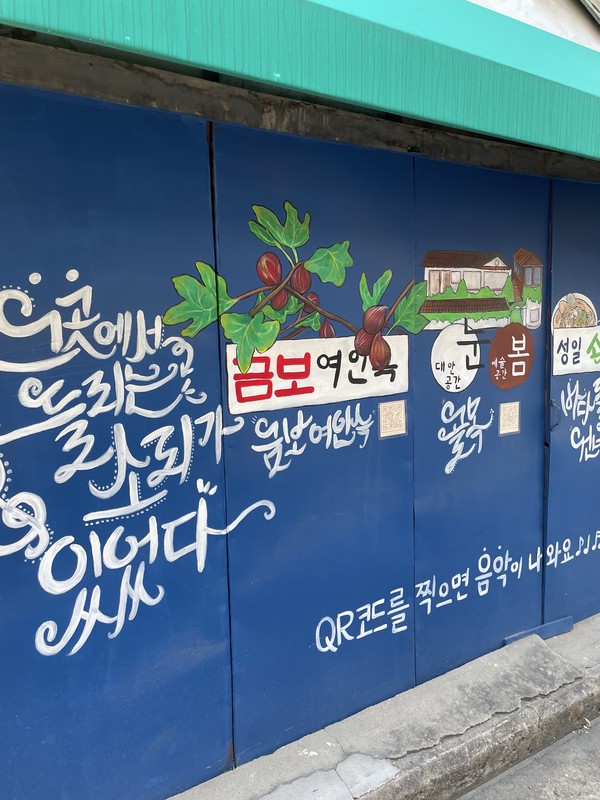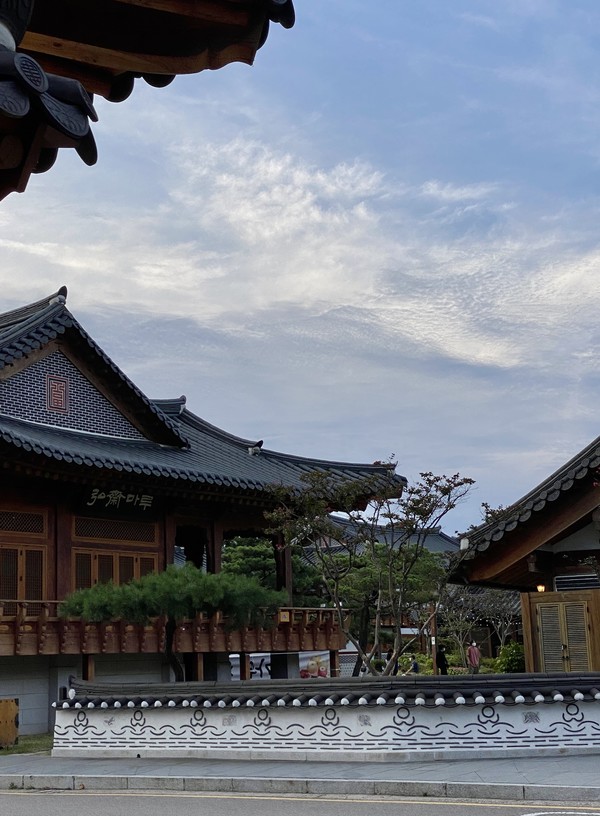Where past and contemporary converge

IT IS hard to leave out Haenggung-dong, a small neighborhood in Suwon-si, when traveling Korea’s most famous historical sites. It is a captivating travel destination where historical-cultural heritage and contemporary culture coexist. To take a closer look into the cultural celebration of Haenggung-dong, my cousins and I decided to pay the neighborhood a visit during the Chuseok holiday. Walking from the Suwon Hwaseong Fortress to the youthful café street, I could see how traditional architecture was retaining its beauty against an urban background.

Suwon Hwaseong Fortress
After getting off the city bus at Jangan Park, we made our way to the famous Suwon Hwaseong Fortress. The Hwaseong Fortress was built in 1794 during the Joseon Dynasty to protect Suwon, which had just been designated as one of the four main regional government centers. It was also a recognition of King Jeong-jo’s filial piety towards his father[1], Prince Sa-do, and an affirmation of Jeong-jo’s will to build a pioneer city where grand political aspirations and initiatives could be materialized.
Starting from the Hwa-seo-mun, the west gate of Hwaseong Fortress, we walked north up along the 5.7 km trail. The Hwa-seo-mun’s single-story wooden pavilion, along with the protruding semi-circular brick wall are features that defended the gate from intruders. Hwa-seo-mun, when directly translated means the “west gate,” but it is actually located in the northwest point of the trail due to Mt. Palda standing tall due west of the Hwaseong Fortress. The impressive durability of the Hwa-seo-mun is proven by how it had gone under minor repair only once in 1975. I recommend starting the trail from the west gate because it provides one of the most iconic sceneries when viewed together with the adjacent Northwestern Watchtower, which granted soldiers a good panoramic view outside the walls. With a series of gun holes made on the wall of the watchtower, soldiers were easily able to thwart their enemies without getting attacked themselves.
After walking along the trail for a few minutes, the Northwestern Artillery Pavilion will appear on the left. Canon-firing artillery was installed inside the pavilion to attack oncoming enemies. Out of the five artillery pavilions in the Hwaseong Fortress, the one in the northwestern pavilion is the tallest. It certainly gives visitors a glimpse into how intimidated intruders must have felt when the artillery was pointed their way.
Before arriving at the Jang-an-mun, the north gate of the Hwaseong Fortress, the northwestern gate guard post welcomed us. The guard post is built on both sides of the Jang-an-mun for when guard soldiers are on the lookout, and the three vertical slits that run down the posts were precisely designed to prevent enemies from climbing the walls. Out of all the fortresses in Korea, the Hwaseong Fortress was the first one to incorporate guard posts by the gate. Originally four guard posts were located inside the Hwaseong Fortress but only those by the Jang-an-mun remain preserved throughout the years, giving visitors another reason to make their way north up the trail.

Haenggung-dong Mural Village
Upon walking eastward for approximately six minutes from the Jang-an-mun, we arrived at the mural village. Because the neighborhood is situated within the walls of the fortress, I could see the transition from a more historical backdrop to modern art murals, making it seem like I was time traveling. Having read about the origins of the mural village, I was excited to visit the site. After the Hwaseong Fortress was designated as a UNESCO World Cultural Heritage Site on Dec. 12, 1997, the neighborhood had to temporarily cease its infrastructure investments because of the cultural property protection policies. The creative murals with pops of vibrant hues on the walls of the narrow alleys are a testament to how residents, artists, and volunteers got together to prevent Haenggung-dong from losing its vitality[2]. Knowing this heartwarming anecdote added to our appreciation of the current beauty of the mural village. Paintings can even be found on house gates, trash bins, and mailboxes, turning the neighborhood into an art gallery. There was also a QR code on one of the walls that visitors can take a picture of, which then directs them to the link of a song. The song was written by young musicians affiliated with Salon Seesaw, an organization stationed in Suwon-si, and some of the popular locations in Haenggung-dong are introduced in its lyrics. Little creative ideas like this underscore the collaborative effort of Suwon residents in trying to preserve their neighborhood.

Haenggung-dong café street
After strolling through the mural village for some time, we headed over to the street alongside the mural village where many cafés were located. Among the trendy cafés were also han-ok themed cafés, fitting the historical significance of Haenggung-dong. The han-ok cafés had traditional tiled-roofs, wooden pillars, and doors, while the interior of the cafés was distinctly modernized.
Walking inside Kyung-an-dang, it was a pleasant surprise to see modern desserts take on a traditional twist. Many traditional Korean ingredients such as matcha, in-jeol-mi, and rice cakes were offered on their menu at a price ranging from ₩5,000 to ₩10,000. It felt as if the cafés were trying to preserve the authentic aspects of Korea.

* * *
While Haenggung-dong may not be the most convenient place to visit from Seoul, it was worth the hour-long bus ride to experience what lies on the outskirts of the busy city. The Hwaseong Fortress and the surrounding neighborhoods left a lasting impression, as they are a tribute to the historical and modern effort to safeguard and preserve the local community.
[1] King Jeong-jo later moved the tomb of Prince Sa-do to Suwon-si.
[2] DongA Ilbo

